![]()
Noms latinsNoms françaisNoms vernaculairesSynonymesLe genre grammatical en BotaniqueCodes de nomenclature
Index
des noms latins des fleurs
et autres êtres vivants

de Linné
A
-
Acer campestre
Acer platanoides
Acer pseudoplatanus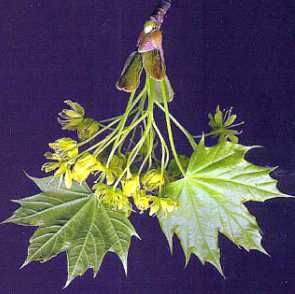
Acer platanoides, mars 2011
Achillea millefolium
Achillea ptarmica
Actaea spicata
Adonis aestivalis
Adansonia (un genre)
Adonis annua
Adoxa moschatellina
Aegonychon purpurocaeruleum
Aegopodium podagraria
Aesculus hippocastanum
Aethusa cynapium subsp. cynapium
Agrimonia eupatoria
Agrimonia procera
Agrostemma githago
Ailanthus altissima
Ajuga genevensis
Ajuga reptans
Alisma lanceolatum
Alisma plantago-aquatica
Alliaria petiolata
Allium oleraceum
Allium schoenoprasum
Allium sphaerocephalon
Allium ursinum
Allium vineale
Alnus glutinosa
Alopecurus geniculatus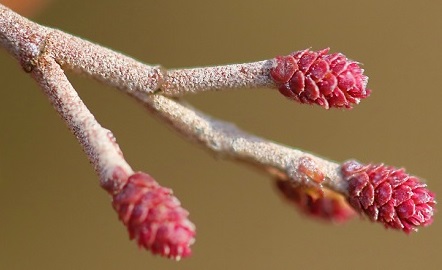
A. glutinosa, Brienon-sur-Armançon, 20-02-2018 - © Daniel Bourget
Alopecurus myosuroides
Alopecurus pratensis
Althaea officinalis
Alyssum montanum
Amaranthus retroflexus
Ambrosia artemisiifolia
Amelanchier ovalis
Anacamptis laxiflora
Anacamptis morio
Anacamptis pyramidalis
Anchusa azurea
Andryala integrifolia
Anemone nemorosa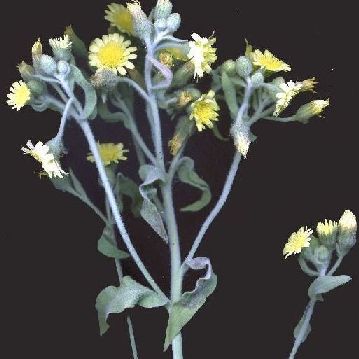
Andryala integrifolia
Anemone ranunculoides
Anemone sylvestris
Angelica sylvestris
Anisantha sterilis
Anomodon viticulosus
Anthemis cotula
Anthericum liliago
Anthericum ramosum
Anthoxanthum odoratum
Anthriscus sylvestris
Anthyllis vulneraria
Apoderus coryli (un coléoptère)
Aquilegia vulgaris
Arabidopsis arenosa
Arabidopsis arenosa subsp. borbasii
Arabidopsis thaliana
Araucaria araucana
Arctium lappa
Arctium minus
Argentina anserina
Aria edulis
Aristolochia clematitis
Arnica montana
Artemisia absinthium
Artemisia vulgaris
Arum italicum
Arum maculatum
Asarum europaeum
Asperula cynanchica
Asplenium ceterach
Asplenium ruta-muraria
Asplenium scolopendrium
Asplenium septentrionale
Asplenium trichomanes
Aster amellus
Astragalus glycyphyllos
Athyrium filix-femina
Atocion armeria
Atrichum undulatum
Atriplex hortensis
Atropa belladona
Aubrieta deltoidea
Avena fatua subsp. fatua
Avenella flexuosa
B
-
Baldellia ranunculoides
Barbarea vulgaris
Bellis perennis
Berberis vulgaris
Berula erecta
Betonica officinalis
Betula pendula
Bidens cernua
Bidens tripartita
Bifora radians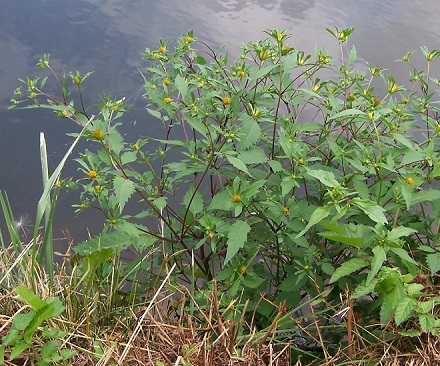
Bidens tripartita, Auxerre, 28 août 2012
Biscutella laevigata
Bistorta officinalis
Blackstonia perfoliata subsp. perfoliata
Blitum bonus-henricus
Bombycilaena erecta
Borago officinalis
Brachypalpus valgus (un insecte)
Brachypodium sylvaticum
Brassica napus var. napus
Brassica nigra
Briza media
Bromus hordeaceus
Bryonia dioica
Buglossoides arvensis
Bunias orientalis
Bupleurum falcatum
Bupleurum rotundifolium
Butomus umbellatus
Buxus sempervirens
C
- Calamagrostis epigejos
Calendula arvensis
Calepina irregularis
Callitriche stagnalis
Calluna vulgaris
Caltha palustris
Calystegia sepium
Campanula glomerata
Campanula rapunculus
Campanula rotundifolia
Campanula trachelium
Cannabis sativa
Capsella bursa-pastoris
Cardamine heptaphylla
Cardamine hirsuta
Cardamine impatiens
Cardamine pratensis
Carduus crispus
Carduus nutans
CAREX sp, avril 2014
Carex acutiformis
Carex alba
Carex bohemica
Carex caryophyllea
Carex digitata
Carex divulsa
Carex flacca
Carex halleriana
Carex hirta
Carex leporina
Carex otrubae
Carex pallescens
Carex pendula
Carex pilulifera
Carex spicata
Carex sylvatica
Carex tomentosa
Carex vulpina
Carpinus betulus
Carthamus lanatus
Carthamus tinctorius
Carya illinoinensis
Castanea sativa
Cedrus atlantica
Centaurea calcitrapa
Centaurea jacea subsp. jacea
Centaurea jacea subsp. angustifolia
Centaurea nigra
Centaurea scabiosa
Centaurium erythraea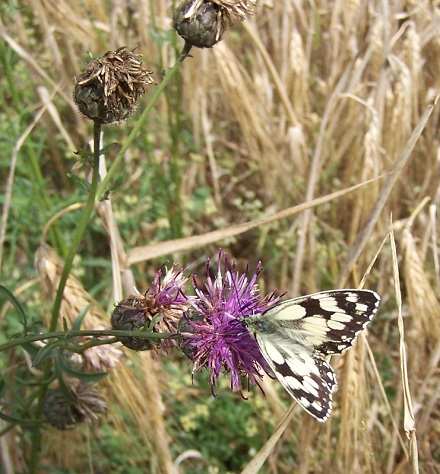
Centaurea scabiosa butinée par Melanargia galathea
Lucy-sur-Cure, 24 juin 2011
Centaurium pulchellum
Centranthus ruber
Cephalanthera damasonium
Cephalanthera rubra
Cerastium fontanum
Cerastium glomeratum
Cercis siliquastrum
Cervaria rivini
Chaerophyllum temulum
Chelidonium majus
Chenopodiastrum hybridum
Chenopodium album
Chrysosplenium oppositifolium
Cicendia filiformis
Cichorium intybus
Circaea lutetiana
Cirsium acaule
Cirsium arvense
Cirsium eriophorum
Cirsium oleraceum
Cirsium palustre
Cirsium tuberosum
Cirsium vulgare
Clematis vitalba
Clematis viticella
Clinopodium vulgare
Colchicum autumnale
Colutea arborescens
Comarum palustre
Conium maculatum
Convallaria majalis
Convolvulus arvensis
Convolvulus cantabrica
Cordia sebestena
Cormus domestica
Cornus mas
Cornus sanguinea subsp. sanguinea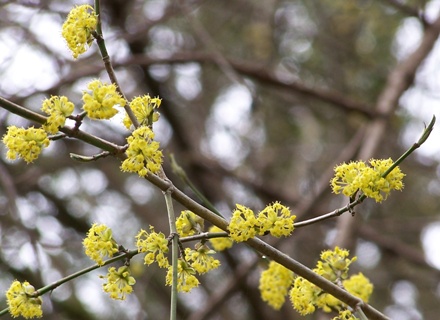
Cornus mas
Coronilla minima
Coronilla varia
Corrigiola littoralis
Corydalis solida
Corylus avellana
Crassula tillaea
Crataegus germanica
Crataegus laevigata
Crataegus monogyna
Crepis capillaris
Crepis sancta
Crocus vernus subsp. vernus
Cruciata laevipes
Cyanus segetum
Cymbalaria muralis
Cynoglossum officinale
Cynosurus cristatus
Cytisus scoparius
D
- Dactylis glomerata subsp. glomerata
Dactylorhiza fuchsii
Dactylorhiza incarnata subsp. incarnata
Dactylorhiza maculata
Dactylorhiza traunsteineri
Damasonium alisma
Danthonia decumbens
Daphne laureola
Datura stramonium
Daucus carota
Delphinium consolida
Dianthus armeria
Dianthus carthusianorum
Dictamnus albus
Digitalis lutea
Digitalis purpurea
Digitaria ischaemum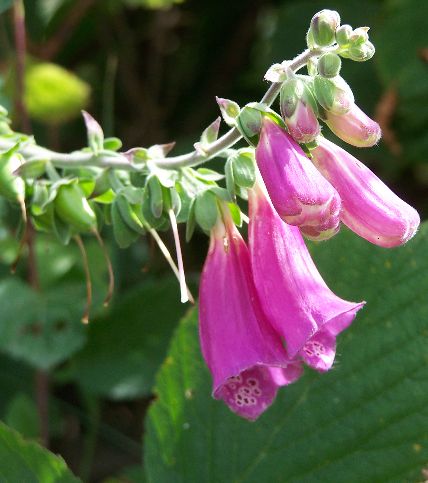
Digitalis purpurea
Digitaria sanguinalis
Dioscorea communis
Diplolepis rosae
Diplotaxis tenuifolia
Dipsacus fullonum
Dipsacus pilosus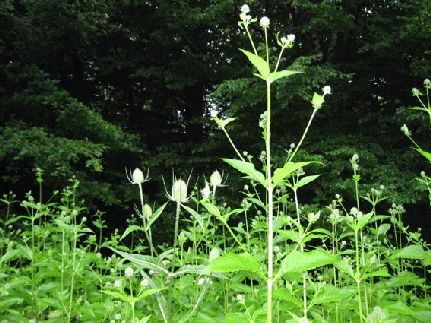
Dipsacus fullonum - Photo © Jean-Pierre AUDARD
Doronicum pardalianches
Draba verna
Drosera intermedia
Drosera rotundifolia
Dryopteris affinis subsp. affinis
Dryopteris filix-mas
E
-
Echinochloa crus-galli
Echium vulgare
Elatine hexandra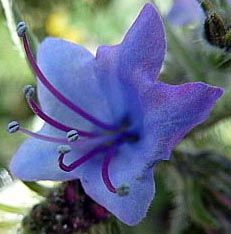
Echium vulgare
Eleocharis palustris
Epichloe typhina
Epilobium angustifolium subsp. angustifolium
Epilobium hirsutum
Epilobium parviflorum
Epipactis atrorubens
Epipactis helleborine
Epipactis muelleri
Epipactis palustris
Epipactis purpurata
Equisetum arvense
Equisetum hyemale
Equisetum telmateia
Eragrostis minor
Eranthis hyemalis
Erica cinerea
Erica tetralix
Erigeron annuus
Erigeron canadensis
Eriophyes tiliae
Eriosoma lanuginosum.htm
Erodium cicutarium
Ervilia hirsuta
Ervum tetraspermum
Eryngium campestre
Eryngium maritimum
Eryssimum cheiri
Erythranthe guttata
Eschscholzia californica
Euonymus europaeus
Eupatorium cannabinum
Euphorbia amygdaloides
Euphorbia cyparissias
Euphorbia dulcis
Euphorbia exigua
Euphorbia helioscopia
Euphorbia lathyris
Euphorbia loreyi
Euphorbia palustris
Euphorbia platyphyllos
Euphorbia seguieriana
Euphorbia verrucosa
Euphrasia officinalis subsp. pratensis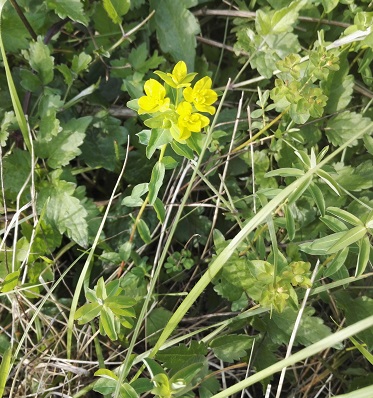
Euphorbia verrucosa - Lucy-sur-Cure, 24 mai 2022
Euphrasia stricta
Exaculum pusillum
F
-
Fagopyrum esculentum
Fagus sylvatica
Fallopia baldschuanica
Fallopia convolvulus
Ficaria verna subsp. verna
Filago germanica
Filago pyramidata
Filipendula ulmaria
Foeniculum vulgare
Fontinalis antipyretica
Fragaria vesca
Fragaria viridis
Frangula alnus
Fraxinus excelsior
Fritillaria meleagris
Fumaria officinalis
Funaria hygrometrica
G
-
Gagea villosa
Galanthus nivalis
Galatella linosyris
Galega officinalis
Galeopsis angustifolia
Galeopsis segetum
Galeopsis tetrahit
Galinsoga quadriradiata
Galium aparine
Galium fleurotii
Galium mollugo
Galium odoratum
Galium palustre
Galium tricornutum
Fleur de Galium palustre : 2 mm
Galium verum
Genista pilosa
Genista sagittalis
Genista tinctoria
Gentiana cruciata
Gentiana pneumonanthe
Gentianella germanica
Gentianopsis ciliata
Geranium columbinum
Geranium dissectum
Geranium molle
Geranium nodosum
Geranium pyrenaicum [nom. et typ. cons.]
Geranium robertianum
Geranium rotundifolium
Geranium sanguineum
Geum urbanum
Ginkgo biloba
Glebionis segetum
Glechoma hederacea
Globularia bisnagarica
Glyceria maxima
Gnaphalium uliginosum
Gratiola officinalis
Grimmia pulvinata
Gymnadenia conopsea
H
- Hedera helix
Hedychium gardnerianum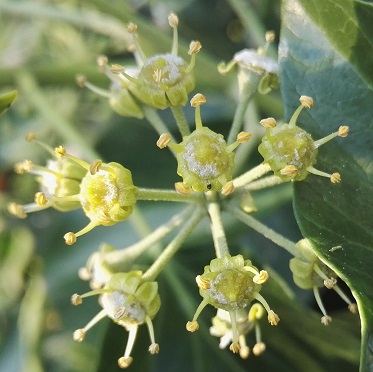
Hedera helix, Courbevoie (Hauts-de-Seine), 11 octobre 2022
Helianthemum apenninum
Helianthemum nummularium
Heliotropium europaeum
Helleborus foetidus
Helminthotheca echioides
Helosciadium nodiflorum
Hepatica nobilis
Heracleum sphondylium
Hesperis matronalis
Un hieracium
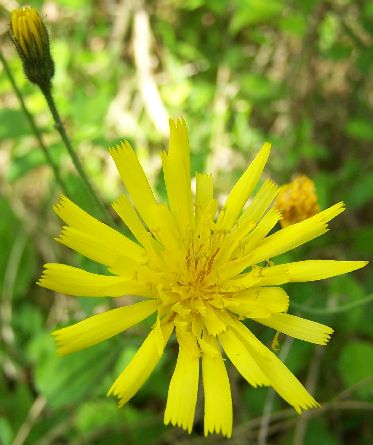
mais lequel, parmi toutes ses micro-espèces
dues à son apomixie ?
Hieracium glaucinum
Hieracium sabaudum
Hieracium umbellatum
Himantoglossum hircinum
Hippocrepis comosa
Hippocrepis emerus
Hippuris vulgaris
Holcus lanatus
Holcus mollis
Hordeum murinum
Humulus lupulus
Hyacinthoides non-scripta
Hydrocotyle vulgaris
Hygroamblystegium fluviatile
Hylocomiadelphus triquetrus
Hylocomium splendens
Hylotelephium telephium
Hypericum elodes
Hypericum hirsutum
Hypericum humifusum
Hypericum perforatum
Hypericum pulchrum
Hypochaeris radicata subsp. radicata
Pour trouver un nom latin :
Dans sa Division II, chapitre VIII, section 1, article 60.7, le Code de Shenzhen (ICN) stipule que :
«Diacritical signs are not used in scientific names. When names (either new or old) are drawn from words in which such signs appear, the signs are to be suppressed with the necessary transcription of the letters so modified; for example ä, ö, ü become, respectively, ae, oe, ue
(not æ or œ, see below);
é, è, ê become e; ñ becomes n; ø becomes oe (not œ);
å becomes ao.
The diaeresis, indicating that a vowel is to be pronounced separately from the preceding vowel (as in Cephaëlis, Isoëtes), is a phonetic device that is not considered to alter the spelling; as such, its use is optional.
The ligatures æ and œ,
indicating that the letters are pronounced together, are to be replaced by the separate letters ae and oe.»
C'est la raison pour laquelle se trouvent toujours dans de vieilles flores encore parfois intéressantes des noms comme par ex. : Æsculus hippocastanum, Æthusa cynapium ou Allium sphærocephalum, Centaurium erythræa, Anagallis fœmina, Fœniculum vulgare, etc...
Noms latinsNoms françaisNoms vernaculairesSynonymesLe genre grammatical en BotaniqueCodes de nomenclature
